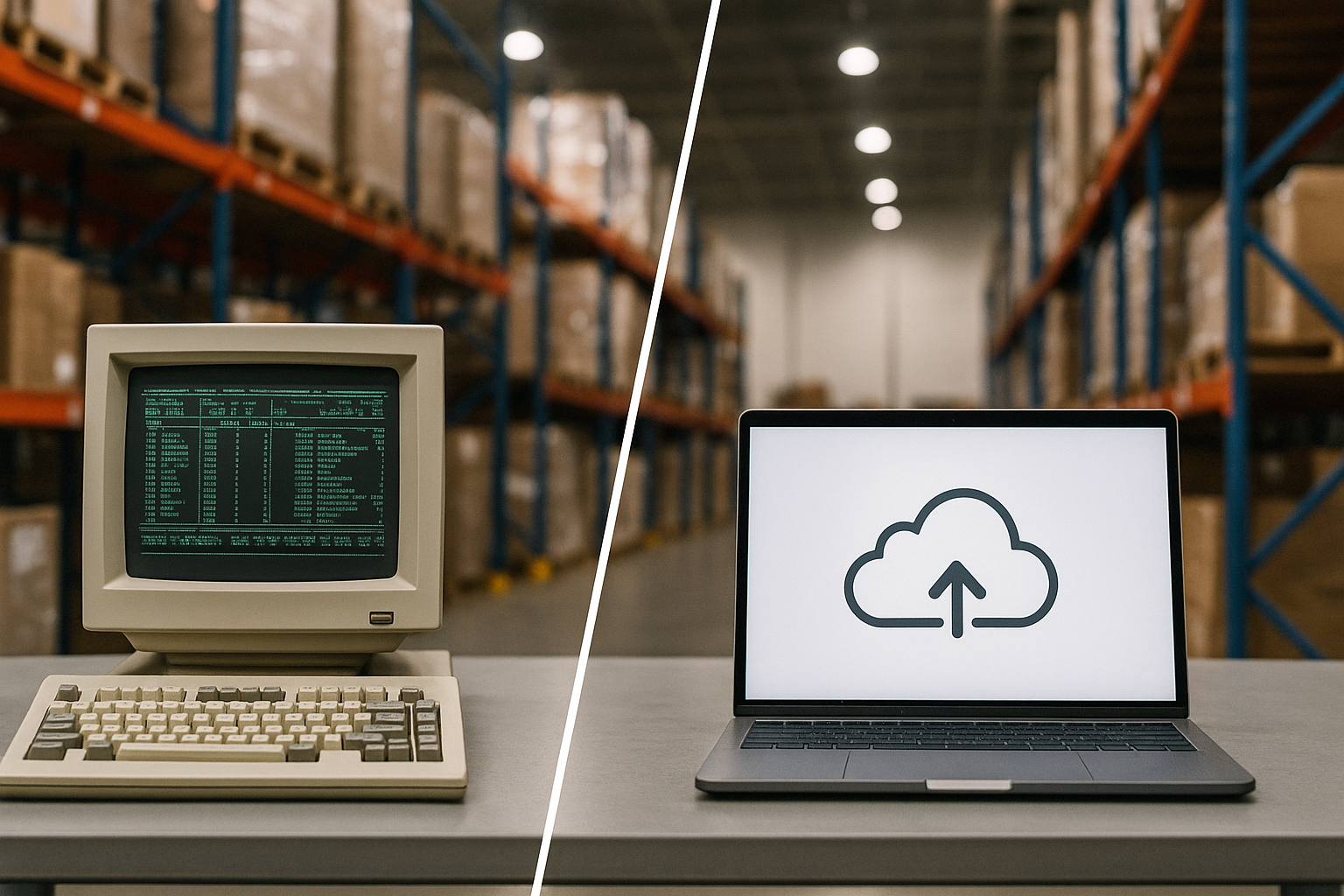If you’ve been managing warehouse operations for a while, you’ve probably felt the strain of keeping things running with systems that feel… well, stuck in time. Maybe it’s that one outdated screen no one wants to touch, or the upgrade that never comes without a headache. That’s your legacy warehouse management software system quietly getting in the way.
And then there’s cloud-based software. It’s fast to set up, easier to access, and doesn’t rely on clunky hardware. But is it really the better choice for your business?
Let’s break it down, human to human — without jargon, fluff, or pretending there’s a one-size-fits-all answer.
What Is a Legacy WMS, Really?
Think of a legacy warehouse management system as something you own entirely. It lives on your hardware, runs on your internal servers, and needs your IT team to keep it alive. It might be deeply familiar, but that comfort sometimes hides its limitations.
The Pros
-
Control stays in-house. Your data, your rules.
-
Customization is deep. If your operations are unique, a legacy WMS can match those specifics.
-
Internet doesn’t hold it hostage. Offline? No problem.
The Cons
-
Updates are a pain. Each upgrade is a project — and an expense.
-
Scaling feels slow. Growing your team or operations often means rewriting code or buying more gear.
-
Integration is awkward. New tools don’t always play well with older systems.
-
Remote work? Good luck. Access outside the warehouse isn’t straightforward.
What About Cloud-Based WMS?
Now picture a system that works in your browser. No software to install, no wires to manage. You log in, and everything’s there. Cloud-based WMS lives on the internet, and the provider keeps it running — updates, security, backups, all included.
What Makes It Appealing
-
Costs less upfront. You pay a monthly or yearly fee, and that’s it — no big servers, no surprise bills.
-
Quick to set up. You can be operational in a matter of weeks.
-
Work from anywhere. Whether you’re on-site or at home, you stay connected.
-
Easy to connect with other tools. Ecommerce, shipping, ERP? The setup is smoother.
-
Updates just happen. You always have the latest version, no need to schedule downtime.
What Might Hold You Back
-
Internet hiccups can slow you down. No internet means no access.
-
Ongoing fees. You never stop paying, and long-term costs can build up.
-
Data location isn’t yours to pick. Some companies prefer to store everything on-site, especially for compliance reasons.
Side-by-Side Comparison
| Feature | Legacy WMS | Cloud-Based WMS |
|---|---|---|
| Setup | On-site installation | Web-based login |
| Costs | High upfront, maintenance | Subscription-based |
| Customization | Very detailed | Usually through modules/APIs |
| Updates | Manual, often delayed | Automatic and frequent |
| Remote Access | Difficult or limited | Easy, from any device |
| Scalability | Slower and technical | Fast and flexible |
So, Which One Fits You Best?
Let’s be honest — this depends on where your business stands right now, and where it’s headed.
Stick with a Legacy WMS if:
-
You’ve already poured resources into hardware and internal systems.
-
Your IT team is solid and can support long-term maintenance.
-
Your processes are so specific that general cloud solutions don’t quite match.
-
You’re required to keep your data on-site.
Go with a Cloud-Based WMS if:
-
You’re tired of clunky upgrades and downtime.
-
You want to grow without rebuilding everything.
-
Your teams need to access warehouse data from multiple locations.
-
You’re looking for better visibility across the supply chain without burning a hole in your budget.
Real Talk: Why More Warehouses Are Switching
Change can feel risky. But many businesses are finding that hanging on to a legacy system costs more than moving on. Delays, errors, slow reporting — these aren’t just annoyances. They drain time and money.
A warehouse management software system that works in real-time, doesn’t depend on bulky servers, and can adapt to whatever the next few years throw at you? That’s hard to ignore.
Even if you’re not ready to switch today, it’s smart to keep your options open. Because staying with a system that’s holding you back isn’t a decision — it’s a delay.
A Few Final Questions You Might Be Asking
1. Will I lose data if I move from legacy to cloud?
Nope — most providers help with a full migration plan. You won’t have to figure it out alone.
2. Is cloud WMS secure?
Yes, top providers use encryption, backups, and monitoring 24/7. Just like your bank.
3. How long does cloud implementation take?
It depends, but many businesses are fully live within a few weeks.
4. What if my internet goes down?
Some platforms offer offline functionality. But yes, a solid connection is key.
5. Can I try before I commit?
Many cloud WMS platforms offer demos or limited trials so you can explore before paying.
Wrapping It Up
You’ve got big goals — your warehouse system shouldn’t be a roadblock. Whether you’re managing a single site or scaling across multiple locations, the software you choose can either slow you down or clear the path ahead.
Legacy systems had their time. If yours is still working and fits your needs, that’s great. But if you’ve been feeling the cracks show, a shift to cloud-based WMS might be the move that finally lets your operations breathe.
Want help comparing options side-by-side? I can help with that too.
